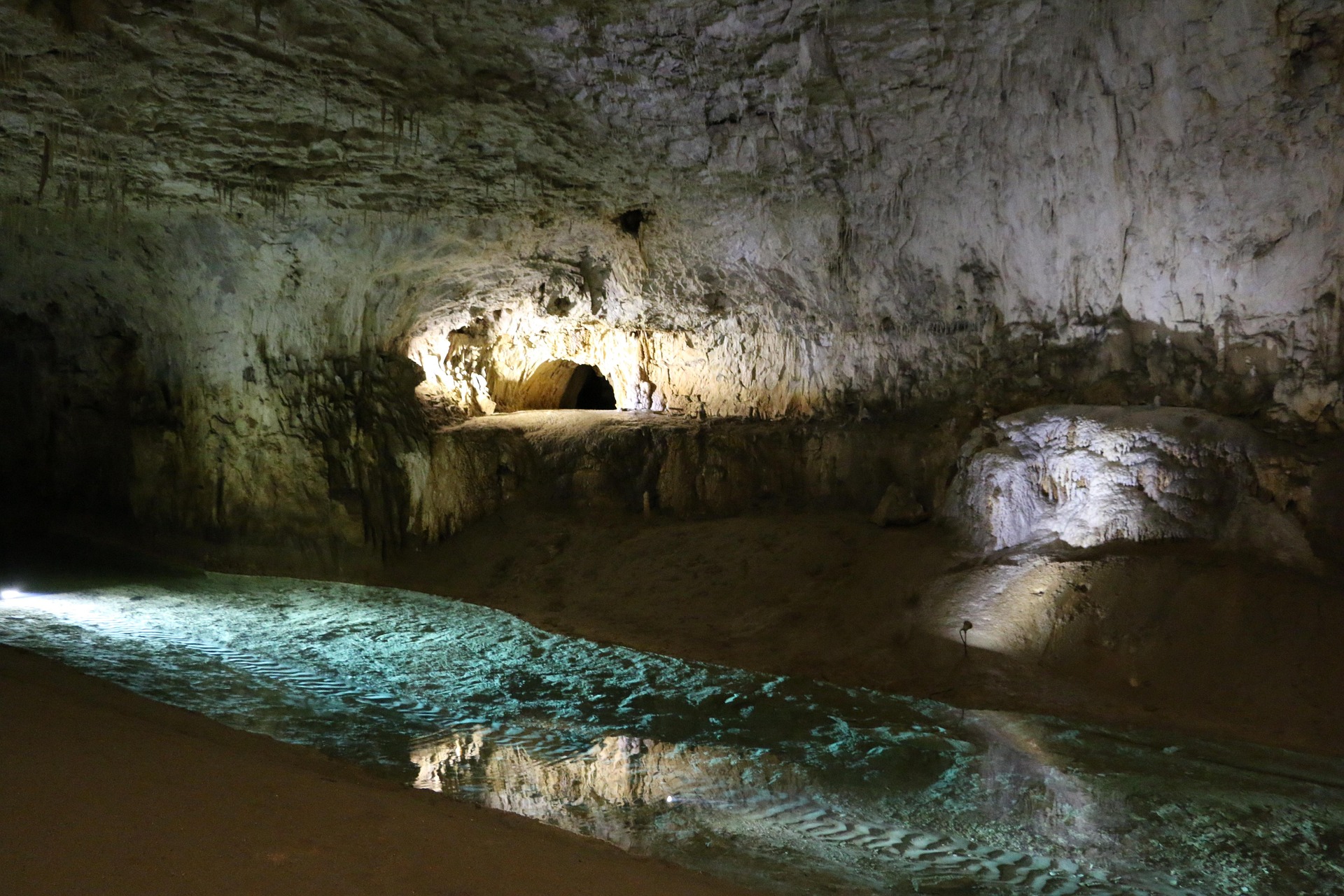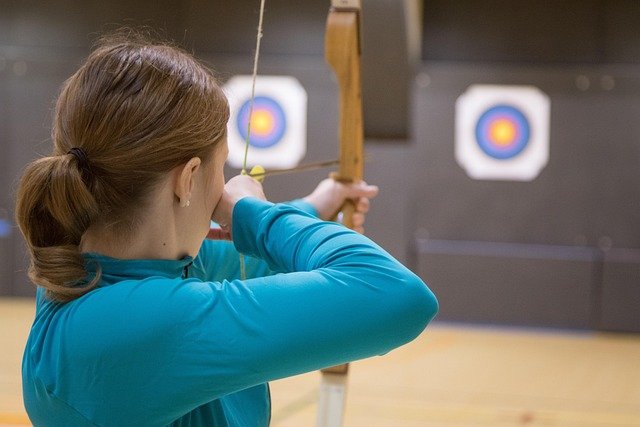Competitive Cliff Diving: Pushing the Limits of Aquatic Acrobatics
Imagine standing atop a 90-foot platform, toes curled over the edge, heart racing as you prepare to plunge into the churning waters below. This is the reality for competitive cliff divers, a breed of athletes who combine grace, precision, and nerves of steel in one of the world's most exhilarating extreme sports. As the sport gains global recognition, we delve into the thrilling world of competitive cliff diving, exploring its history, techniques, and the physical and mental challenges faced by these daring aquatic acrobats.

The modern sport of competitive cliff diving, however, began to take shape in the mid-20th century. In 1934, a group of young men in Acapulco, Mexico, began diving from the cliffs of La Quebrada into the narrow inlet below, attracting tourists and eventually becoming a popular attraction. This daring display caught the attention of the international community, leading to the formation of organized competitions.
In the 1950s, cliff diving gained further recognition when it was featured as a showcase event at the 1956 Summer Olympics in Melbourne, Australia. Although it did not become an official Olympic sport, this exposure helped spark interest worldwide and laid the groundwork for future competitive events.
The Red Bull Cliff Diving World Series
The most prominent modern cliff diving competition is the Red Bull Cliff Diving World Series, which began in 2009. This annual series features elite divers competing at breathtaking locations around the globe, from the azure waters of the Mediterranean to the rugged coastlines of Ireland and the urban landscapes of Boston Harbor.
The series has significantly contributed to the sport’s growth, providing a professional platform for athletes and bringing cliff diving to a wider audience. Competitions are judged based on factors such as the difficulty of the dive, the execution, and the overall aesthetic impression, with divers performing a series of required and optional dives throughout the event.
The Physics and Techniques of Cliff Diving
Competitive cliff diving is a complex interplay of physics, athleticism, and mental fortitude. Divers typically leap from platforms ranging from 26 to 28 meters (85 to 92 feet) for men, and 20 to 21 meters (66 to 69 feet) for women. At these heights, divers can reach speeds of up to 85 kilometers per hour (53 mph) before entering the water.
The physics of cliff diving are crucial to both the spectacle and the safety of the sport. As a diver falls, they must manipulate their body position to control their rotation and trajectory. This involves a deep understanding of angular momentum, air resistance, and the principles of projectile motion.
Divers employ various techniques to execute their dives safely and spectacularly:
-
The Take-off: The initial jump is critical, as it sets the trajectory for the entire dive. Divers must generate sufficient height and distance from the platform to clear any obstacles and enter the water safely.
-
The Flight: During the descent, divers perform a series of twists, somersaults, and other acrobatic maneuvers. These movements are carefully choreographed to achieve the desired difficulty level and aesthetic appeal.
-
The Entry: Perhaps the most crucial aspect of the dive is the entry into the water. Divers aim for a clean, vertical entry to minimize impact and reduce the risk of injury. This requires precise timing and body control to align themselves with the water’s surface in the final moments of the dive.
Physical Demands and Training
The physical demands of competitive cliff diving are immense, requiring a unique combination of strength, flexibility, and body awareness. Divers must possess exceptional core strength to maintain control during their aerial maneuvers and to withstand the impact of entering the water at high speeds.
Training for cliff diving involves a multifaceted approach:
-
Dry Land Training: This includes strength and conditioning exercises, plyometrics, and gymnastics to build the necessary power and body control.
-
Trampoline Work: Trampolines allow divers to practice complex aerial maneuvers in a controlled environment, helping them develop spatial awareness and perfect their techniques.
-
Pool Diving: Before attempting high dives from cliffs or platforms, divers spend countless hours perfecting their skills in diving pools, gradually increasing the height and difficulty of their dives.
-
Mental Preparation: Visualization techniques and meditation are crucial components of a diver’s training regimen, helping them overcome fear and maintain focus during high-pressure situations.
-
Water Entry Training: Divers practice entering the water at various angles and speeds to prepare for the impact of high dives and to perfect their entry technique.
The Mental Game: Overcoming Fear and Pressure
While the physical aspects of cliff diving are undoubtedly demanding, the mental challenges are equally formidable. Divers must confront and overcome intense fear and anxiety associated with leaping from extreme heights.
Sports psychologists working with cliff divers often focus on several key areas:
-
Fear Management: Techniques such as cognitive restructuring and exposure therapy help divers reframe their fears and gradually build confidence in high-dive situations.
-
Focus and Concentration: Mindfulness practices and concentration exercises enable divers to maintain their focus despite the intense pressure and distractions of competition.
-
Visualization: Mental rehearsal of dives helps athletes prepare for various scenarios and build confidence in their abilities.
-
Stress Management: Techniques for managing pre-competition anxiety and maintaining composure during high-stakes events are essential for competitive success.
-
Goal Setting: Establishing clear, achievable goals helps divers maintain motivation and track their progress over time.
The ability to manage these psychological challenges often separates the elite divers from the rest, as mental fortitude is just as crucial as physical skill in this extreme sport.
Safety Measures and Risk Management
Given the inherent dangers of cliff diving, safety is paramount in competitive events. Organizers and athletes take numerous precautions to minimize risks:
-
Water Depth: Competition sites must have a minimum water depth of 5 meters (16.4 feet) to ensure safe entry for divers.
-
Water Aeration: Bubbles are often introduced into the water to break its surface tension, reducing the impact force on divers.
-
Rescue Teams: Trained rescue divers and medical personnel are always on standby during competitions.
-
Weather Monitoring: Wind speed and direction, water conditions, and visibility are closely monitored, with events postponed or canceled if conditions become unsafe.
-
Platform Design: Diving platforms are carefully engineered to provide a stable, non-slip surface and clear sightlines for divers.
-
Gradual Progression: Competitive divers typically start at lower heights and gradually work their way up to the extreme heights of professional competition, allowing their bodies and minds to adapt to the increasing demands.
Despite these precautions, cliff diving remains a high-risk sport, and injuries can occur. Common injuries include bruising, sprains, and in more severe cases, concussions or spinal injuries from improper entries.
Environmental Considerations and Sustainability
As competitive cliff diving often takes place in natural settings, there is a growing emphasis on environmental stewardship within the sport. Event organizers and athletes are increasingly aware of their responsibility to protect the ecosystems in which they compete.
Initiatives to promote sustainability in cliff diving competitions include:
-
Minimizing Environmental Impact: Careful site selection and preparation to avoid damage to fragile coastal ecosystems.
-
Waste Reduction: Implementation of zero-waste policies at events, encouraging the use of reusable materials and proper waste management.
-
Education and Outreach: Using the platform of high-profile events to raise awareness about marine conservation and coastal protection.
-
Partnerships with Environmental Organizations: Collaborating with local and international conservation groups to support ongoing protection efforts in competition locations.
-
Carbon Offsetting: Some events and athletes are beginning to offset their carbon footprint through various environmental initiatives.
These efforts not only help preserve the natural beauty of diving locations but also contribute to the sport’s positive image and long-term sustainability.
The Future of Competitive Cliff Diving
As competitive cliff diving continues to evolve, several trends are shaping its future:
-
Technological Advancements: The use of high-speed cameras and motion tracking technology is providing new insights into dive mechanics, helping athletes refine their techniques and push the boundaries of what’s possible.
-
Increased Inclusivity: Efforts are being made to make the sport more inclusive, with a growing focus on women’s events and initiatives to attract diverse participants from around the world.
-
Virtual Reality Training: VR technologies are being explored as a tool for mental preparation, allowing divers to experience high dives in a safe, controlled environment.
-
Biomechanical Research: Ongoing studies into the biomechanics of cliff diving are leading to improved training methods and potentially safer diving techniques.
-
Integration with Other Sports: There is growing interest in combining cliff diving with other extreme sports, such as base jumping or freestyle skiing, to create new hybrid events.
-
Expansion of Competition Formats: New competition formats, such as team events or synchronized cliff diving, are being explored to add variety and excitement to the sport.
The Cultural Impact of Cliff Diving
Beyond its status as a competitive sport, cliff diving has had a significant cultural impact in many parts of the world. In some coastal communities, it has become an integral part of local traditions and tourism:
-
Cultural Festivals: In places like Acapulco, Mexico, cliff diving performances are central to cultural festivals and celebrations, drawing thousands of spectators.
-
Tourism Draw: Cliff diving spots have become major tourist attractions in many locations, contributing to local economies and raising awareness of the sport.
-
Inspiration for Extreme Sports: The daring nature of cliff diving has inspired other extreme sports and pushed athletes in various disciplines to explore new heights and challenges.
-
Art and Media: Cliff diving has been featured in numerous films, documentaries, and art installations, capturing the public imagination with its blend of beauty and danger.
-
Environmental Awareness: The sport’s connection to natural settings has helped raise awareness about the importance of preserving coastal environments and water quality.
Challenges Facing the Sport
Despite its growing popularity, competitive cliff diving faces several challenges:
-
Safety Concerns: The inherent risks of the sport continue to be a major concern, requiring ongoing efforts to improve safety measures and protocols.
-
Limited Accessibility: The specialized nature of cliff diving and the need for suitable natural or constructed diving sites limit its accessibility compared to other aquatic sports.
-
Regulatory Issues: In some areas, cliff diving faces legal restrictions or bans due to safety concerns or environmental protection measures.
-
Funding and Sponsorship: Securing consistent funding and sponsorship for events and athletes remains a challenge, particularly outside of major series like the Red Bull World Series.
-
Olympic Recognition: Despite efforts by some advocates, cliff diving has yet to gain recognition as an Olympic sport, which could provide a significant boost to its global profile.
-
Environmental Impact: As the sport grows, there is increasing scrutiny of its impact on natural environments, requiring careful management and sustainable practices.
The Role of Technology in Cliff Diving
Technology is playing an increasingly important role in the world of competitive cliff diving, enhancing both the athlete experience and spectator enjoyment:
-
Performance Analysis: High-speed cameras and motion capture technology allow coaches and athletes to analyze dives in minute detail, identifying areas for improvement in technique and form.
-
Training Aids: Dry-land simulators and virtual reality systems are being developed to provide safe training environments for practicing complex dives.
-
Safety Equipment: Advancements in impact-resistant materials are leading to improved safety gear for divers, potentially reducing the risk of injury.
-
Spectator Experience: Live streaming, multi-angle replays, and augmented reality applications are enhancing the viewing experience for fans, bringing them closer to the action.
-
Judging and Scoring: Electronic scoring systems and instant replay technology are improving the accuracy and transparency of judging in competitions.
-
Environmental Monitoring: Advanced sensors and data analytics are being used to monitor water conditions and weather patterns, ensuring optimal safety for divers.
The Psychology of Extreme Sports
The allure of cliff diving provides a fascinating window into the psychology of extreme sports. Researchers have identified several factors that draw individuals to high-risk activities like cliff diving:
-
Sensation Seeking: Many cliff divers exhibit high levels of sensation-seeking behavior, craving the intense rush of adrenaline that comes with extreme activities.
-
Flow State: The intense focus required in cliff diving can induce a state of “flow,” a highly rewarding psychological state characterized by complete absorption in the task at hand.
-
Self-Efficacy: Successfully executing challenging dives can greatly enhance an individual’s sense of self-efficacy and confidence.
-
Risk Perception: Experienced cliff divers often have a different perception of risk compared to the general population, viewing their activities as calculated rather than reckless.
-
Identity Formation: Participation in extreme sports like cliff diving can play a significant role in shaping an individual’s identity and social connections.
Understanding these psychological factors is crucial not only for improving athlete performance but also for developing effective safety protocols and training programs.
The Global Cliff Diving Community
Competitive cliff diving has fostered a unique global community of athletes, enthusiasts, and supporters:
-
International Competitions: Events like the Red Bull Cliff Diving World Series bring together divers from around the world, fostering international camaraderie and cultural exchange.
-
Online Communities: Social media platforms and specialized forums allow cliff diving enthusiasts to share experiences, techniques, and safety information across borders.
-
Training Camps: International training camps provide opportunities for divers to learn from each other and experienced coaches, improving skill levels across the sport.
-
Conservation Efforts: The cliff diving community often engages in collaborative efforts to protect and preserve diving sites around the world.
-
Youth Development: Initiatives to introduce young athletes to the sport in a safe, controlled manner are helping to ensure its future growth and sustainability.
This global network not only supports the development of the sport but also promotes a shared ethos of respect for nature, personal challenge, and athletic excellence.
Conclusion: The Enduring Appeal of Competitive Cliff Diving
Competitive cliff diving stands at a unique intersection of athleticism, courage, and natural beauty. It challenges the limits of human capability while showcasing some of the world’s most stunning locations. As the sport continues to evolve, it faces the dual challenges of maintaining safety and environmental responsibility while pushing the boundaries of what’s possible in aquatic acrobatics.
The future of competitive cliff diving looks bright, with growing global interest, technological advancements, and a passionate community of athletes and fans. As it moves forward, the sport will likely continue to inspire awe, push the limits of human performance, and remind us of the powerful connection between humans and the natural world.
Whether viewed as a daring spectacle, an ultimate test of skill and courage, or a celebration of human potential, competitive cliff diving remains a captivating and uniquely thrilling sport. Its continued growth and evolution promise to keep spectators on the edge of their seats and inspire future generations of aquatic daredevils for years to come.





